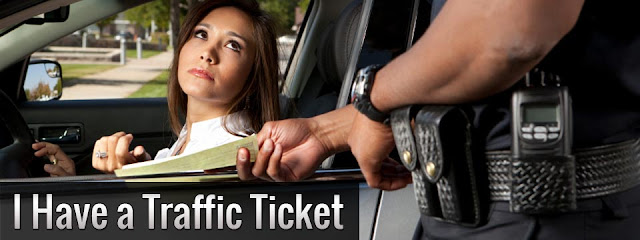On the off chance that you are ticketed for speeding, your
protection will rely on upon the way of as far as possible. Every one of the 50
states utilize three fundamental sorts of speed cutoff points, called
"outright," "assumed," and "essential." Because
each kind of speed breaking point infringement regularly requires an
exceptional protection, it is critical to comprehend which you are accused of
disregarding
"Total" Speed Limit
Most states have an "outright" speed law. There is
no trap to how this functions: If the sign says 40 mph and you drive 41 mph or
more, you have damaged the law. There are relatively few protections accessible
for disregarding outright speed restrain laws, however some include:
• Attacking
the officer's assurance of your speed. To do this you should find what strategy
the officer used to decide your speed - like radar, laser, or pacing - and
afterward assault that specific technique.
• Claiming
a crisis constrained you to surpass as far as possible to maintain a strategic distance
from genuine harm or damage to yourself or others. For example, in the event
that you needed to accelerate to keep away from a little plane making a crisis
arrival on an expressway, you would have a decent case.
• Claiming
that the officer mixed up your auto for another auto. With such a variety of
comparable looking late-display autos, it is exceptionally conceivable that a
cop could see a speeding auto, dismiss it around a corner, and after that
wrongly select your auto additionally not far off.
"Assumed" Speed Limits
Being accused of abusing an "assumed" speed
constrain implies you are blamed for driving at a dangerous speed, considering
the conditions at the time you were ticketed. In case you're blamed for
damaging an "assumed" speed constrain, you have two conceivable
resistances:
• Claim you
weren't surpassing the posted speed restrict, similarly as you would on the off
chance that you were accused of disregarding a "flat out" speed law.
• Claim
that, regardless of the possibility that you were surpassing as far as
possible, you were driving securely given the particular street, climate, and
activity conditions at the time.
shot of winning on the off chance that you can demonstrate
you were quite recently marginally over the point of confinement and street,
climate, and movement conditions were great. For instance, on the off chance
that you know you were driving 33-35 mph in a 25-mph zone, and the officer can
presumably demonstrate it, you ought to focus your Traffic Lawyers Melbourne
on demonstrating that you were driving at a sensible speed, considering the
conditions at the time you were halted.
In an "assumed" speed law case, you have the
weight of demonstrating your speed was protected and reasonable. As such, the
speed law presumes the posted speed point of confinement is the quickest safe
speed. It is dependent upon you to demonstrate that going quicker at the time
you were ticketed is likewise protected.
While demonstrating that it was sheltered to go 65 mph in a
35 mph zone will be near unimaginable, there are some wide, straight streets
intended for safe driving at 35 to 50 mph that have bring down posted speed
limits in light of political weight on open authorities to take action against
speeding.
Here are essential approaches to construct your case:
• Go back
to the scene and take photographs in the meantime and day of the week you were
refered to. Additionally, take a photograph from the driver's perspective. It's
clearly to your advantage on the off chance that you can set up the street was
straight, with great perceivability.
• Diagram
the street, demonstrating the area of your vehicle, the officer's vehicle, and
whatever other movement. It helps on the off chance that you were not ticketed
in a bustling business region where autos enter and leave parking garages and
organizations.
• The
nearness of substantial movement can now and then be an or more. With heaps of
different autos out and about your ion could be that "everybody was
surpassing as far as possible by around 10 mph and I would have jeopardized
myself as well as other people by driving slower than the stream of
movement."
"Assumed" speed restrain laws work both ways. On a
lovely summer morning on a wide, uncrowded roadway, it might be protected to
drive over the posted speed confine. Nonetheless, on a wet day when perceivability
is constrained by haze, it may not be protected to drive at the posted speed
restrict. An officer can even now ticket you for driving at or underneath as
far as possible, in the event that it is perilous to do as such. This is valid
in all states.
The "Fundamental" Speed Law
"Outright" speed states set a maximum breaking
point, above which your speed is viewed as illicit. Drive one mile over the
farthest point and you are a culprit. In any case, these states likewise have
an approach to ticket you when you are driving under as far as possible if an
officer finishes up your speed was dangerous. Called the
"fundamental" speed law, it restricts driving at a hazardous speed,
regardless of the possibility that that speed is underneath as far as possible.
Related Ads
In all states, tickets for driving under as far as possible,
however too quick to be in any way protected, are frequently alluded to as
"driving too quick for conditions." For instance, driving precisely
at the 65 mph posted point of confinement on the turnpike would not be
brilliant in the midst of slower and overwhelming activity, in a thick haze, or
in a driving rainstorm or snow squall.
The distinction between battling one of these tickets and a
speeding ticket for going over as far as possible is that here the indictment
has the weight of demonstrating you were driving dangerously. (Once more, that
is on the grounds that the posted speed breaking point is attempted to be
sheltered.) This implies the officer must affirm that, given the strange
street, climate, or activity conditions, your underneath the-restrain speed was
dangerous. This can be difficult to do unless you were included in a mischance,
since the cop might be hard put to concoct enough hard proof to invalidate the
assumption set up by as far as possible.
Police frequently depend on the "fundamental"
speed law after a mishap. They reason that you were driving too quick,
regardless of how moderate you were driving, since you were in a mishap. Be
that as it may, you don't need to lose hope on the off chance that you were in
a mishap and are accused of damaging the "fundamental" law for
driving at a perilous underneath the-restrict speed. The way that you've had a
mischance is not outright verification that you were driving dangerously.
Mischances, all things considered, are not generally brought about by your
abusing the law. Frequently they are brought on when another driver messed up.
In the event that the cop contends that the mishap itself is
confirmation that you were driving at a risky speed, despite the fact that you
were not in fact speeding, you should be set up to test him. Your best wagers
are typically to guarantee, and ideally demonstrate, that the mishap could have
happened for various reasons. For instance, it could have been:
• entirely
or halfway another driver's blame
• the
consequence of an oddity demonstration of nature, as a sudden wind blast, a
tree falling, or other characteristic event, or
• a
deformity in the thruway, signs, or flags, which would happen if a stop sign is
missing or a stoplight falls flat
Contact Traffic Lawyers Melbourne for more
information

